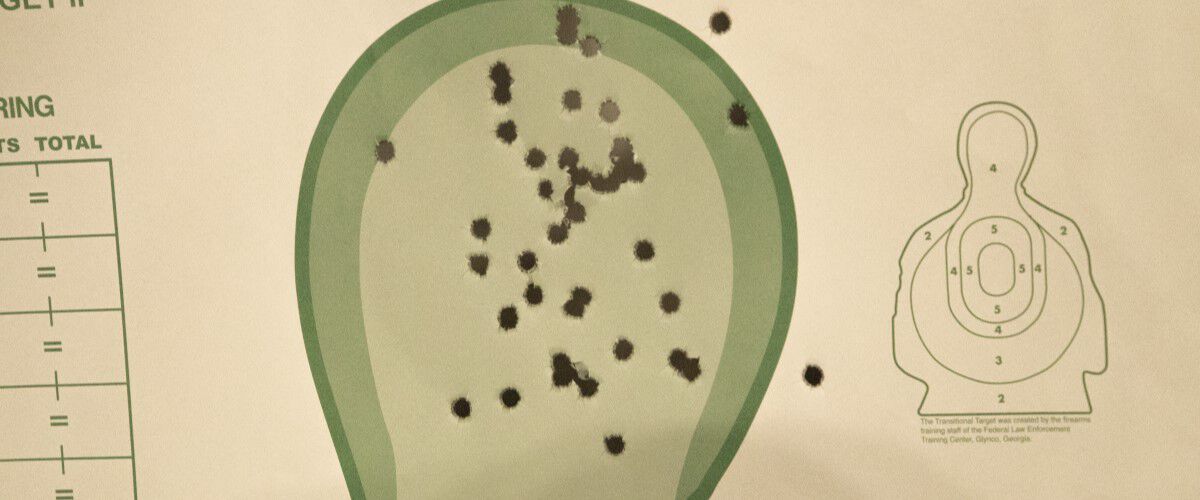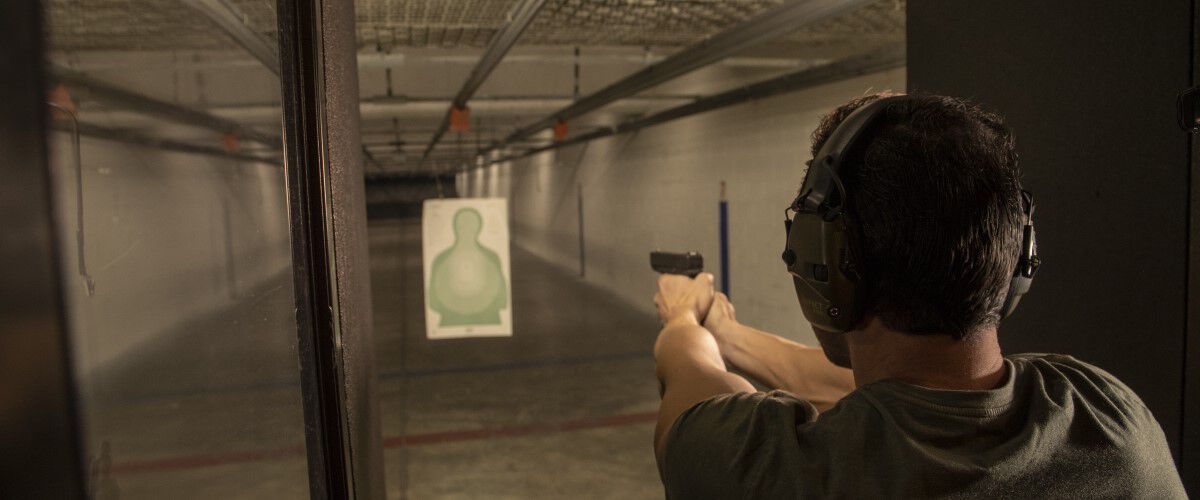Learning From Misses

You’re going to miss. It’s going to happen. It doesn’t matter if you’re shooting a rifle, shotgun or pistol, your projectile isn’t always going to find its mark. It’s frustrating. The trick is not settling. You need to dissect each miss. You missed for a reason, and you need to uncover that reason and remedy it. Why? Your life could depend on your next shot.
Life-Changing Lesson
Competition shooter Sean Burrows was at an ATM withdrawing money when he was mugged. It was during his younger years, before he started shooting seriously, and he didn’t have a firearm on him. One minute he was getting money out for a movie and the next he had a gun in his back. The assailant wanted his PIN. The man was difficult to understand and when Sean turned to ask him to repeat what he wanted, the man took his gun off him. Sean seized the moment and delivered a punishing blow to the jaw. It knocked the man out cold and Sean ran off.
“I like to tell that story,” Sean says. “If I would’ve had a gun, I may have been forced to use it. You never know when something bad could happen, and when it does, you will flee or fight. If you fight, you need to fight well. A self-defense situation isn’t the time for a miss.”
The Music Man
Sean notes that shooters miss for lots of reasons. To address them, he recommends slowing things way down. A professional drummer-for-hire for many years, Sean played jazz gigs, hard rock and most everything in between, and the experience provides unique perspective for shooting.
“As a musician, I really had to be in the moment. If you’re playing jazz one night and hard rock the next, you have to slow things down and focus. You can’t be in a rush. Practice sessions should be focused, and your objectives should be clear. If you’re going to spend an hour working on getting into your backstrap, then really work on it. Don’t do it a few times and then start shooting. You need to perfect every part of the shot process.”
Filming yourself or having someone else film you is a great way to spot problems. When you have video of your practice session, you can slow the video way down and look at every part of the shot process. Just like a college football coach watches game films to expose an opponent’s weakness, you need to find imperfections in your shot process.

After a good film study, you will have things to work on. Sean recommends working on one thing at a time and spending a lot of time in dry-fire mode.
“Dry-fire is great,” he says. “You’re not firing a round so you’re naturally a little more relaxed. Plus, you take hitting the mark out of the equation. Trying to fix a problem while actively shooting can lead to more frustration and confidence loss. Many times, missing is just a matter of going too fast. Shooters are trying to increase draw speed while getting a solid press out and then sending a round before they have a clear sight picture.”
The Real Deal
Sean also suggests shooters spend time going through the draw-and-fire process. Why? It’s likely you won’t have your gun out when a self-defense situation arises. You will have to access your firearm and make a good shot. Learning to slow your mind down and focus on the process is key, and this can only happen through practice. Practice develops muscle memory.
Another great way to boost your accuracy, learn to remain calm under pressure and have some fun is to get into competitive shooting. Shooting against others and against the clock is a great way to hone your skills and keep them sharp.

Lawman
Train with ammunition that not only offers superb consistency but also feel and point of aim that are as close as possible to your self-defense loads. All Speer Lawman options are loaded with our exclusive TMJ bullet.
Learn More